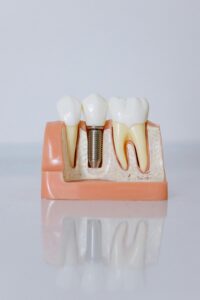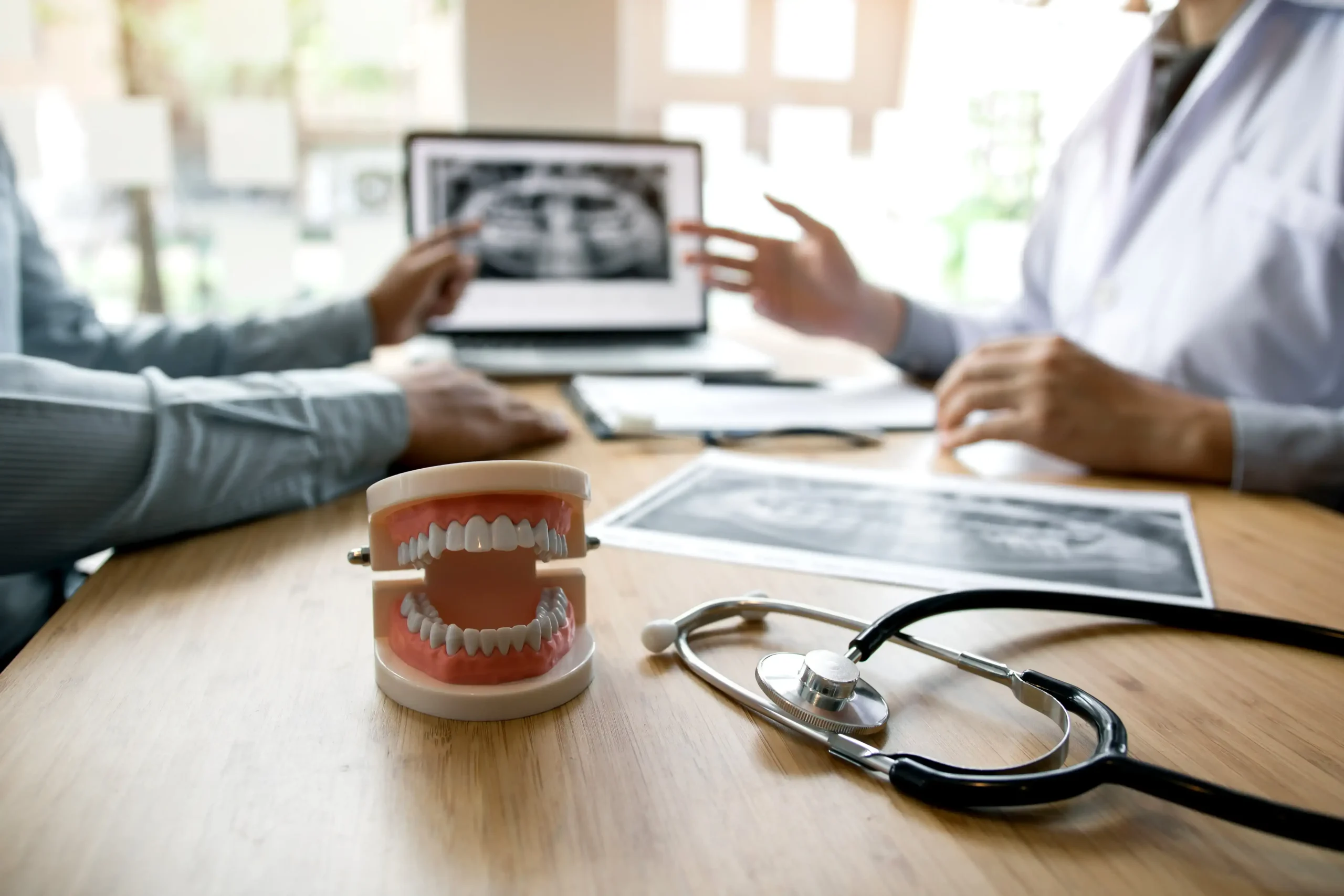Table of Contents
Discover Dorset Dental: Your Solution to Sleep Apnea in Scarborough
Are you struggling with sleep apnea and seeking a solution? Welcome to our comprehensive guide on Dorset Dental, the top sleep apnea clinic in Scarborough.
This article is worth reading as it provides valuable insights into the signs of sleep apnea, the importance of a sleep clinic, and the effective treatments available at Dorset Dental.
Understanding Sleep Apnea and Its Impact
Sleep apnea is a condition in which your breathing stops periodically during sleep, as many as 20-30 times per hour. This lack of oxygen alerts your brain, which temporarily wakes you up to restart proper breathing. The constant wake-sleep cycle prevents those with sleep apnea from achieving deep sleep, resulting in a constant drowsy feeling during the day.
Signs of Sleep Apnea: When Should You Be Concerned?
The signs of sleep apnea include loud snoring, waking up short of breath, and excessive daytime sleepiness. If you or a loved one is experiencing these symptoms, it may be time to seek help from a sleep clinic like Dorset Dental.
What is Dorset Dental and Why is it Essential?
Dorset Dental is a medical facility that diagnoses and treats sleep disorders like sleep apnea. At Dorset Dental, patients undergo a sleep study, which is an overnight diagnostic test that monitors a patient’s sleep patterns. The data collected during the sleep study helps sleep specialists diagnose sleep disorders such as obstructive sleep apnea (OSA), central sleep apnea (CSA), and mixed sleep apnea.
Dorset Dental: Your Go-To Centre for Sleep Apnea
The Dorset Dental clinic in Scarborough is a state-of-the-art facility that offers comprehensive sleep diagnostic and treatment services. Our team of specialists is dedicated to helping patients suffering from sleep disorders achieve better sleep and improve their quality of life.
Do You Suffer from Sleep Apnea? Here’s What You Need to Know
Sleep apnea is a serious sleep disorder where breathing repeatedly stops and starts. If you snore loudly and feel tired even after a full night’s sleep, you might have sleep apnea. It’s important to get a diagnosis as untreated sleep apnea can lead to complications such as high blood pressure, stroke, and heart disease.
Oral Devices: An Effective Treatment for Sleep Apnea at Dorset Dental
At Dorset Dental, treatment for sleep apnea may involve an oral device that we can custom-create for you. These devices position the mouth in such a way that prevents throat blockage, providing a non-invasive and effective treatment for sleep apnea.
Exploring Other Types of Sleep Apnea
Apart from obstructive sleep apnea, there are other types of sleep apnea such as central sleep apnea and mixed sleep apnea. Each disorder has its unique symptoms and requires a different treatment approach. At Dorset Dental, we offer a multi-disciplinary approach to diagnose and treat these disorders effectively.
Complications of Untreated Sleep Apnea
Untreated sleep apnea can lead to severe health complications, including hypertension, diabetes, and heart disease. They can also cause chronic fatigue, affecting your daily activities and overall quality of life. Therefore, it’s crucial to seek treatment if you suspect you have a sleep disorder.
Does Your Family Suffer from Sleep Apnea?
Sleep apnea can run in families. If your family suffers from sleep apnea, it’s essential to get screened. Early detection and treatment can prevent complications and enhance your long-term health.
Contact Us at Dorset Dental: Your First Step Towards Better Sleep
If you’re suffering from sleep disorders, don’t hesitate to contact us at Dorset Dental. Our team of specialists will tailor a treatment plan to your specific needs, helping you achieve restful sleep and improve your health.
Key Takeaways
- Sleep apnea is a serious condition that requires immediate attention.
- Recognize the signs of sleep apnea and seek help if needed.
- Dorset Dental offers comprehensive diagnostic and treatment services for sleep apnea.
- Oral devices are an effective treatment for sleep apnea at Dorset Dental.
- Untreated sleep apnea can lead to severe health complications.
- If sleep apnea runs in your family, consider getting screened.

DONT'T DELAY BOOK TODAY!
The Scarborough Dentist You Can Trust 🦷
Awaken to Better Sleep: Conquer Sleep Apnea in Scarborough with Our Expert Care
Latest Posts

Lost a Tooth During Black Friday Shopping? What to Do — and How Dorset Dental Can Help
Black Friday shopping in Scarborough can be hectic. With crowded stores, tight spaces, and the rush to snag the best deals, accidents happen — including unexpected dental injuries. If you end up with a knocked-out tooth, knowing what to do in the moment can make all the difference. As your trusted Scarborough Dentist and Family Dentist, Dorset Dental is here to guide you through the steps and provide fast, reliable Emergency care when you need it most. How Does a Black Friday Accident Lead to a Knocked-Out Tooth? You’d be surprised how often it happens: A sudden elbow in a packed checkout line Slipping on a wet mall floor A shopping cart collision Rushing during door-crasher sales No matter how it occurs, a knocked-out tooth is a true dental emergency — but with quick action, the tooth may still be saved. What To Do Immediately After a Tooth Gets Knocked Out 1. Stay Calm — Every Minute Counts Your best chance of saving the tooth is to see a dentist near me within 60 minutes. 2. Locate the Tooth Pick it up by the crown only. Avoid touching the root, as this can damage delicate tissues. 3. Rinse Carefully If the tooth is dirty, rinse briefly with milk or saline.Do not scrub or use soap. 4. Try to Put the Tooth Back Gently place it back in the socket and bite down softly on gauze.This helps preserve the root. 5. Keep It Moist If Reinsertion Isn’t Possible Place the tooth in: Milk A tooth preservation kit Inside your cheek Never let it dry out. 6. Call Dorset Dental Immediately We reserve space for Emergency dental visits.Call 416-261-2946 while you are on the way. How Dorset Dental Treats a Knocked-Out Tooth At Dorset Dental — your community Scarborough Dentist — we will assess the tooth and determine the best treatment: ✔ Reimplantation If the tooth is viable, we can carefully secure it back in place. ✔ Splinting We stabilize the tooth so it can heal properly over the coming weeks. ✔ Root Canal Treatment Often recommended after reimplantation to ensure long-term success. ✔ Replacement Options If the tooth cannot be saved, our Family Dentist team offers: Dental implants Bridges Cosmetic restorations We’ll help you choose the option that best restores your smile. Why Choose Dorset Dental in Scarborough for Emergency Care? Trusted Family Dentist serving the Scarborough Bluffs community Fast, reliable Emergency dental appointments Modern technology Compassionate, experienced team Convenient location at 119 Dorset Road Whether you’re searching for a dentist near me or need urgent help, Dorset Dental is here to support you. Final Thoughts A Black Friday shopping mishap doesn’t have to mean losing your smile. Quick action — and a trusted Scarborough Dentist — can make all the difference. If you or a loved one experiences a dental Emergency, call Dorset Dental right away at 416-261-2946. Our team is ready to help you get back to smiling with confidence. 0/5 (0 Reviews)

How a Dental Cleaning Supports Heart Health — And Why You Should Book Before Year-End
Most people know that a Dental Cleaning helps keep teeth bright and gums healthy — but many don’t realize it can also help protect your heart health. At Dorset Dental, your trusted Scarborough Dentist, we care about your oral health and your overall well-being. With the end of the year approaching, now is the perfect time to schedule your cleaning and maximize your dental insurance before your benefits reset. The Mouth–Heart Connection Your oral health and heart health are deeply linked. Research shows that gum disease (periodontal disease) is associated with an increased risk of heart problems, including heart disease, clogged arteries, and stroke. Here’s why: 1. Inflammation Travels Gum disease causes inflammation in the mouth. When untreated, that inflammation can spread through the bloodstream and contribute to inflammation in blood vessels — a major risk factor for cardiovascular disease. 2. Bacteria Enter the Bloodstream Harmful bacteria from infected gums can enter the bloodstream and attach to blood vessels, potentially contributing to plaque buildup and reduced blood flow. 3. Shared Risk Factors Lifestyle factors like poor diet, smoking, and stress affect both gum health and heart health. This makes routine dental care essential for your overall well-being. Why Regular Dental Cleanings Matter A professional Dental Cleaning removes plaque and tartar buildup that you cannot eliminate with brushing or flossing alone. Regular cleanings help: Reduce gum inflammation Prevent gum disease Lower harmful oral bacteria Promote healthier blood vessels and circulation At Dorset Dental, we provide gentle, thorough cleanings to help patients from Scarborough, the Bluffs, and surrounding communities maintain excellent oral and overall health. Use Your Dental Insurance Before It Expires Most insurance plans reset on January 1st — meaning unused benefits do not carry forward. Booking your dental cleaning now helps you: Maximize your dental coverage Prevent gum disease and support heart health Avoid the end-of-year rush and limited availability Start the new year with a clean, healthy smile If you haven’t used your 2025 cleaning or exam benefits yet, now is the best time to book. Visit Your Trusted Scarborough Dentist — Dorset Dental Whether you’re in Scarborough, the Bluffs, or nearby communities, Dorset Dental is here to support your health with comprehensive care and comfortable visits. 📞 Call us: 416-261-2946📍 119 Dorset Road, Scarborough, ON M1M 2S9💻 Book online anytime! 0/5 (0 Reviews)

Don’t Lose Your 2025 Dental Benefits — Schedule Your Appointment Before the Year Ends!
As the year comes to a close, life in Scarborough, especially around the Cliffside and Bluffs neighbourhoods, gets busy with holiday plans, family gatherings, and festive activities. But before you dive into the celebrations, don’t forget one important thing — your dental health! If you haven’t used your dental benefits yet, now is the perfect time to schedule your appointment at Dorset Dental in Scarborough before the year wraps up. 🦷 Why You Should Book Before December 31st Most dental insurance plans reset on January 1st, meaning any unused benefits for cleanings, exams, or treatments will not carry over into the new year. That means if you delay your visit, you could lose hundreds of dollars in coverage that you’ve already paid for through your premiums. At Dorset Dental, conveniently located near the Scarborough Bluffs and Cliffside Village, we want to help you maximize your benefits and keep your smile healthy and bright all year round. ✅ Use Your 2025 Benefits For: Routine cleanings and checkups Fillings, crowns, or other restorative treatments Whitening or cosmetic touch-ups before holiday photos Periodontal maintenance or gum care Orthodontic adjustments and follow-ups 📅 Appointments Fill Up Fast Our schedule fills quickly in November and December as patients in Scarborough, Cliffside, and the Bluffs area book last-minute appointments to use their benefits. To ensure you get a time that works best for you and your family, book your appointment as soon as possible. 💙 We’re Here to Help If you’re not sure what your insurance covers or how much of your benefits remain, our friendly team can help you review your plan and make the most of it. Don’t wait until it’s too late — your future self (and your smile) will thank you! 📍 Dorset Dental119 Dorset Road, Scarborough, ON M1M 2S9📞 Call us today: 416-261-2946 0/5 (0 Reviews)




